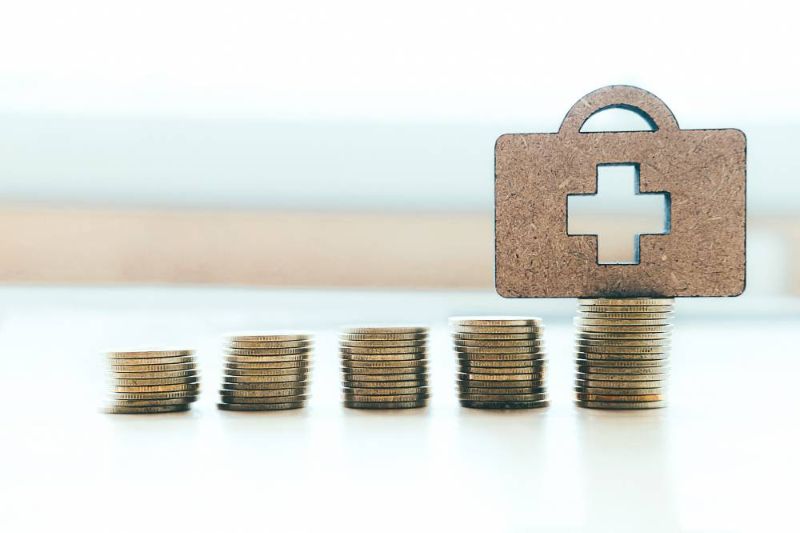by Nicolas Posunko, Skolkovo Institute of Science and Technology
Still from a video showing a blindfolded test subject telling the size of an object (gray pipe) based on feedback from the prosthetic arm handling the pipe. Credit: Gurgen Soghoyan et al./Frontiers in Neuroscience
Researchers from Skoltech, prosthetics manufacturer Motorica, and Far Eastern Federal University have for the first time compared the sensations in phantom limbs of amputees during spinal and peripheral nerve stimulation as reported by the same patients.
Using feedback from the prosthetic hand in the form of electrical impulses, the patients succeeded in distinguishing between items of various sizes, as well as between soft and hard objects by touch. The experiments continued for a month, enabling patient learning and habituation to be monitored. Besides the participants' subjective reports, the team studied their brain activity records. The study came out in Frontiers in Neuroscience.
The research team worked with two patients with arm amputation above the elbow. Each participant had electrodes implanted both near the spinal cord and into a peripheral nerve in the arm. The two electrodes thus delivered stimulation of two distinct types, and the researchers set out to compare the associated sensations.
The study is the first to report both spinal and peripheral mapping in the same patients. In other words, while receiving stimulation of each kind (as well as of both kinds at once), with the electrical impulse parameters varied, the patient shared his subjective perceptions and how they changed. It turned out that peripheral stimulation—the one using an electrode in the arm—brought about sensations of a more localized nature, which were more alike to the feedback one gets from a healthy limb.
Another unique feature of the study is that as the patients were reporting their subjective sensations, the researchers also monitored the objective response of the brain to the stimulation via electroencephalography—a technique for recording neural activity with electrodes placed on the scalp.
X-ray images showing the electrodes for spinal cord stimulation (depicted on the left, positioned near the spine) and peripheral nerve stimulation (depicted on the right, positioned in the medial nerve of the left hand) in one of the patients. Credit: Gurgen Soghoyan et al./Frontiers in Neuroscience
The brain response proved more lateralized (uneven with respect to the left versus the right hemisphere) under peripheral stimulation, which agrees with the patients subjective impressions and with the intuition that a pattern corresponding to right hand movement should be observed in the left hemisphere and vice versa.
"Besides that, the EEG showed that in the case of peripheral stimulation, the signal in the brain dies down faster," says the study's lead author, Research Scientist Gurgen Soghoyan of Skoltech Neuro, who is also pursuing a Ph.D. on the Institute's Life Sciences program.
"Our explanation for this is that such stimulation is easier for the nervous system to adapt to. No similar effect is observed for spinal stimulation: There is no habituation to the stimulus, and habituation means adaptation, which would be an indirect indication of the stimulus being perceived as natural."
"One more thing: One of the patients reported that his sensations grew more natural day to day," the researcher went on. "Such favorable dynamics encourage optimism regarding the prospects for a widespread adoption of neural prosthetics with sensory feedback. It also underscores the utility of studies like our own, which continue for a number of days and therefore stand a better chance of reproducing the real-life scenarios of patients using prosthetics."
The experiments were conducted in multiple stages. The researchers developed a neural prosthesis with feedback that enables tactile sensations. The patients were invited to hold hard cylinder-shaped objects of three distinct sizes with the prosthetic arm while blindfolded. Even without any prior training, one of the participants could tell the size of the objects with significantly fewer mistakes than if he had been making guesses at random. The other patient, however, turned out to require training.
Once the participants received some training, they could both complete the task, and for the initially successful test subject, the error rate dropped. Following a break lasting several days, which is itself an advantage of longer studies, the error rate decreased even more.
Apparently, the brain further assimilated what it had learned without any additional training. One of the patients even managed to tell the objects from one another based on spinal stimulation. The researchers hypothesize this might indicate a degree of skill transfer between different feedback modes.
In a separate experiment, the patients were tasked with distinguishing between soft and hard cylinders. Once again, the first test subject could complete the task without prior training and the second with training. That experiment involved multimodal stimulation.
Namely, peripheral and transcutaneous electrical nerve stimulation (TENS) imitated tactile sensation and proprioception, respectively. Proprioception refers to the sense of body position. TENS is a third modality distinct from both spinal and peripheral stimulation.
"In the prior phases, peripheral nerve stimulation enabled the patients to distinguish between hard and soft objects, as well as those of different sizes using a prosthetic hand. By virtue of electrical stimulation, the team achieved reliable sensation for the patients in their artificial limbs, and phantom limb pain was reduced by 90% via spinal and peripheral nerve stimulation," " says study co-author Yury Matvienko, the head of the Neurotechnology Department at Motorica.
"This breakthrough that we've made is not just about a finer control of the prosthesis but also about the transfer of sensory data from the device to the user."
More information: Gurgen Soghoyan et al, Restoration of natural somatic sensations to the amputees: finding the right combination of neurostimulation methods, Frontiers in Neuroscience (2024). DOI: 10.3389/fnins.2024.1466684
Journal information: Frontiers in Neuroscience
Provided by Skolkovo Institute of Science and Technology






Post comments